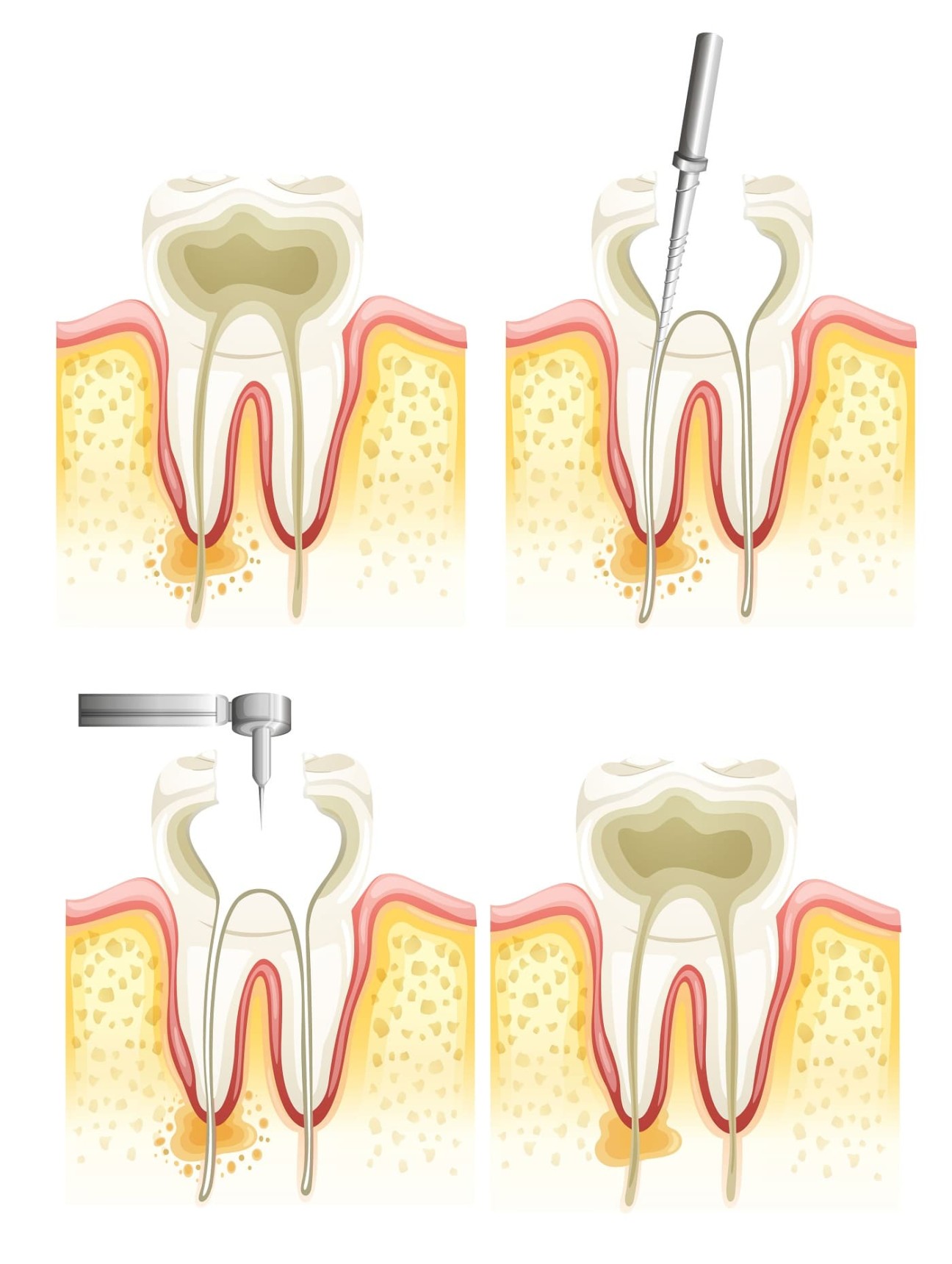Cookies are used on this website.
For detailed information about cookies, you can review the Semboldis Cookie Policy.

When the decayed tooth progresses in the tooth and reaches the living tissue of the tooth called pulp, unbearable pain occurs in the tooth. In this case, it is necessary to enter the root canals of the teeth and remove them from living tissue and bacteria. After the root canal entrances are carefully found and determined, special metal instruments are used to reach the root tip. Then, the expanded canals are disinfected with suitable solutions and purified from bacteria. These canals, which are expanded and shaped, are tightly filled with canal filling materials and clogged, and canal treatment is applied. The treatment is completed by applying filling, onlay or crown procedure to the upper part of the tooth according to the condition.
The tooth area to be treated with root canal treatment is anesthetized by injecting anesthetic solution before the procedure. Therefore, patients generally do not feel any pain. After the treatment, it is normal to have operation pain for a few days. For this reason, pain relief can be recommended to the patient. In addition, the patient may feel sensitivity and discomfort in the related tooth while chewing for up to 2 weeks.
Although it varies according to the condition of the tooth, if there is no active or chronic inflammation in the root of the tooth and the tooth has not lost its vitality yet, it is usually finished in one session. However, if there is active inflammation and swelling in the root of the tooth or if a chronic inflammation opens into the oral environment through a fistula, only the canals are shaped and disinfected in the first session. The tooth is covered with a temporary filling and the patient is called to the next session a week later. If the symptoms disappear completely, the channels are filled and the treatment is completed. However, if the recovery is not fully achieved, the patient is invited to dressing sessions at intervals of one week until the symptoms disappear completely.
The cause of an active inflamed, painful and swollen tooth is dental canals infected with bacteria. Therefore, such teeth should be intervened immediately, the canals should be opened and the inflammation causing swelling should be drained, if possible. Since root canal treatment does not cause excessive bleeding and damage in soft tissues such as tooth extraction, it is unlikely that the inflammation will spread to the whole body through blood. However, some patients may have swelling and pain that makes it impossible to open the mouth or to intervene. In such patients, antibiotics can be prescribed and canal treatment can be started when the inflammation severity decreases a little.